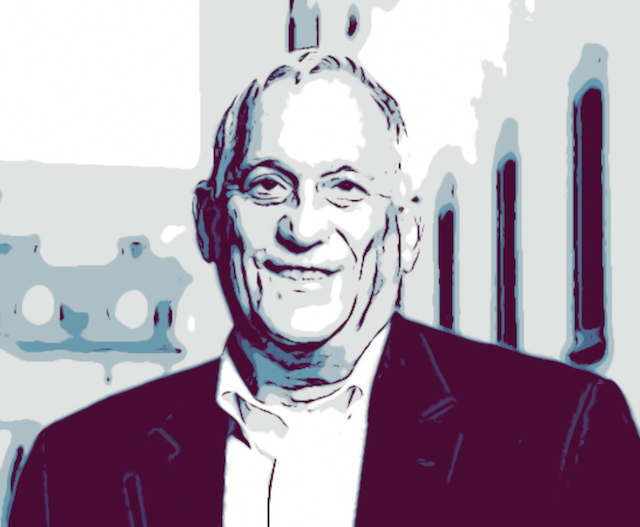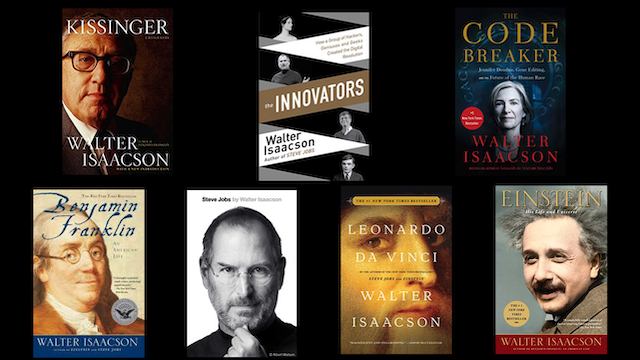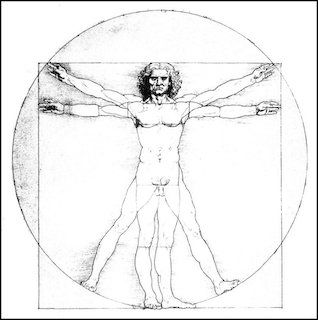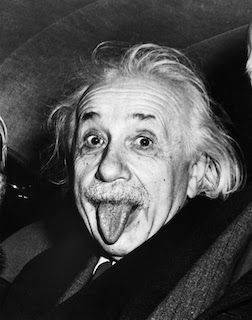Walter Isaacson on 4 Traits of History's Biggest Innovators
"Smart people are a dime a dozen and often don't amount to much. What counts is being creative and imaginative. That's what makes someone a true innovator."

Walter Isaacson is a bit of a Renaissance Man.
He has been a journalist, editor for Time Magazine, chairman and CEO of CNN in the early 2000s, and president and CEO of the Aspen Institute. Currently, he is a Professor of History at Tulane University.
But he is most well known for being an accomplished Biographer. He has written biographies about Henry Kissinger, Albert Einstein, Benjamin Franklin, Steve Jobs, and Leonardo DaVinci, to name a few.
He spends his life studying and writing about some of the most innovative people who have shaped history. But, while many consider his subjects geniuses, Isaacson disagrees that having genius is what makes them special. He writes, "Smart people are a dime a dozen and often don't amount to much. What counts is being creative and imaginative. That's what makes someone a true innovator."
Having picked up on a few key themes consistent with his subjects, here are four traits he believes were impactful in helping his subjects make history-changing innovations.

Be passionately curious
“We are all born without knowledge, but curious. With curiosity we should be able to learn as much as possible. With curiosity, it has to take a lot of work to remain ignorant.” - Benjamin Franklin
Einstein also believed that curiosity was more important than talent or knowledge, saying, "I have no special talent; I am only passionately curious." When he was young, he was fascinated by his father's compass. For days, he was mesmerized by how the needle would point the same direction no matter how he moved it, even when nothing touched it, sparking his interest in Physics.
Leonardo DaVinci was largely self-educated and studied nature, mechanics, anatomy, physics, architecture, weaponry, and more. His notebooks were filled with random questions: Why is the sky blue? What does the tongue of a woodpecker look like? How is the pattern of swirling water similar to that of curling hair?
Benjamin Franklin was also mostly self-educated, and his formal education ended when he was ten. However, while working at a printing press while he was young, he would read any book he could that came in for re-printing.
After conversations with ship captains, Franklin was curious why some ships took less time to reach America than merchant ships. These questions led him to invent tools that measure the temperature of the water, and he was the first person to create a chart of the gulf stream.
This type of curiosity leads to being more observant, asking questions that most people don't think to ask, and discovering answers that lead to innovations.
Love and connect the Arts and Sciences

Nature is the source of all true knowledge. She has her own logic, her own laws, she has no effect without cause nor invention without necessity." - Leonardo da Vinci
Einstein became fascinated by music, mathematics, and science as a child. While pondering complex problems, he would pull out his violin and play Mozart, saying that music helped connect him to the harmony of spheres.
Leonardo da Vinci was an architect, inventor, and painter. In an eleven-paragraph job application, the first ten were all about his engineering qualifications, and only in the last paragraph did he mention he could paint. Today, he is best well known for his paintings, including the Mona Lisa and The Last Supper.
Benjamin Franklin is remembered for being one of America's Founding Fathers. But during his time, he was also an author, publisher, diplomat, scientist, and inventor. He was extremely famous due to his experiments with electricity and invented musical instruments, stoves, bifocals, and much more.
Whenever Steve Jobs launched a new product such as the iPod or iPhone, his presentation ended with street signs that showed an intersection of Liberal Arts Street and Technology Street. He said, "It's in Apple's DNA that technology alone is not enough," and "We believe that it's technology married with the humanities that yields us the result that makes our heart sing."
Isaacson says people who love all fields of knowledge are the ones who can best spot the patterns that exist across nature.
Have a "reality distortion field"
“The people who are crazy enough to think they can change the world are the ones who do.” - Steve Jobs
When Albert Einstein was a third-class patent clerk, he studied devices that sent signals between different clocks to synchronize them. He had an idea that maybe people in various states of motion would have different perceptions of whether the clocks were synchronized.
At the time, the science community was trying to figure out how the speed of light remained constant no matter how fast the observer was moving toward or away from the source.
He theorized that the speed of light is always constant because time itself is relative depending on one's state of motion. This was the basis for his "theory of relativity" and was a significant shift in thinking. It even took the science community a few years to realize that he was right.
Not happy with the boot-up time of the original Mac, Steve Jobs challenged his engineer to shave off 10 seconds to make it faster. The engineer responded that it was impossible, but Jobs persisted. The engineer ended up shaving 28 seconds.
Many around Jobs said he had a reality distortion field, which comes from a Star Trek episode where aliens create an entirely new world through sheer mental force.
Innovators don't settle for how things are. Instead, they think outside the box and challenge themselves and those around them to re-consider what is possible.
Retain a childlike sense of wonder

“There are only two ways to live your life. One is as though nothing is a miracle. The other is as though everything is a miracle.” - Albert Einstein
Einstein wrote to a friend, "You and I never cease to stand like curious children before the great mystery into which we were born." Einstein was still trying to figure out a unified theory to explain the universe even on his deathbed.
There are many things that we could wonder about but don't. For example, as we get older, we might enjoy the beauty of a blue sky, but we no longer bother to wonder why it's that color like Da Vinci did.
Issacson says that most of us quit puzzling over everyday phenomena at a certain point in life. Our teachers and parents, becoming impatient, tell us to stop asking so many questions. He writes, "We should be careful never to outgrow our wonder years—or let our children do so."
The subjects for Isaacson are indeed special, but not in the sense that they were blessed with unique intelligence or gifts. Instead what makes them unique was their fascination with life and the world around them, Isaacson writes; "Innovators never stop wondering about the world around them and are fascinated by how it works."
Sources:
- Walter Isaacson bio by David Skinner
- Invent and Wander: The Collected Writings of Jeff Bezos, With an Introduction by Walter Isaacson
- Walter Isaacson interview on Benjamin Franklin
- Einstein's Creativity: A Talk with Walter Isaacson
- Walter Isaacson, "Leonardo Da Vinci"
- Walter Isaacson: The Genius of Innovation
